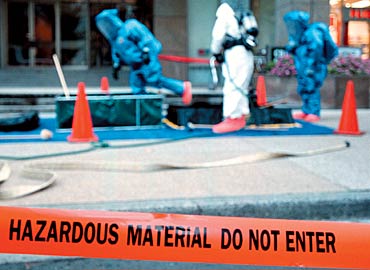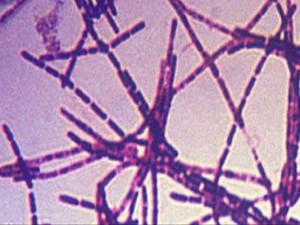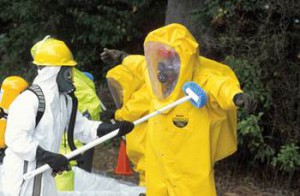Can the Emergency Medical Services Evolve to Meet the Needs of Today?
Click here to view the PowerPoint PDF
The emergency medical services (EMS) provide a means of rapid treatment and transportation to definitive care for those people who suffer immediate life-threatening injuries or illnesses (Department of Transportation, National Highway Traffic Safety Administration, n.d.; Mayer, 1980). There are a number of models across the country and the world that are seeking to redefine EMS in a way that is more meaningful in both of its missions, public safety and public health (Washko, 2012). However, financial constraints and overzealous regulations serve only to pigeon-hole EMS into the decade of its birth and refinement, the 1970s, by restricting incentive and growth and limiting the efficacy of directed research and its application towards the much needed restructuring of EMS.
In this brief literature review, I will examine the roots and context of EMS, its mission and current application, as well as possibilities for research, growth, and development. It is important to recognize that EMS is a grand resource for both public safety and public health, especially in light of the growing body of legislation that officials are using to redefine the current health care system within the United States. As we continue to develop EMS, other nations will look to us as they have in the past to adopt and adapt our system for use throughout the world.
A Brief History of Contemporary EMS
There were many forms of organized out-of-hospital medical aid provided throughout history from the biblical good Samaritan to the triage and extrication from the battlefields of the Roman conquests and the Napoleonic wars through the U.S. Civil War and every major war and conflict in U.S. history; however, it was not until the advent of combined mouth-to-mouth resuscitation and closed chest massage (what we know today as cardiopulmonary resuscitation, or CPR), enhanced 9-1-1 for use by the public in summoning emergency services, and the release of a 1966 white paper prepared by the Committee on Trauma and Committee on Shock of the National Academy of Sciences, National Research Council, that we have the EMS system that we are familiar with today (Department of Transportation, National Highway Traffic Safety Administration, 1996). It was about this time that the Department of Transportation (DOT) was given purview over EMS at the national level with the passage of the National Highway Safety Act of 1966.
During the 1970s, EMS had transitioned from mostly untrained funeral home drivers to providers trained by emergency physicians to treat many of the life-threatening scenarios that prevent people from seeking medical attention at hospitals, such as traumatic injuries, cardiac arrest, and many breathing problems. Since this time, there have been a number of concerted efforts and official recommendations by the DOT to augment and improve the delivery model of EMS throughout the country (Department of Transportation, National Highway Traffic Safety Administration, n.d., 1996, 2008). As early as 1996, the DOT published the vision of the future of EMS:
Emergency medical services (EMS) of the future will be community-based health management that is fully integrated with the overall health care system. It will have the ability to identify and modify illness and injury risks, provide acute illness and injury care and follow-up, and contribute to treatment of chronic conditions and community health monitoring. This new entity will be developed from redistribution of existing health care resources and will be integrated with other health care providers and public health and public safety agencies. It will improve community health and result in more appropriate use of acute health care resources. EMS will remain the public’s emergency medical safety net. (Department of Transportation, National Highway Traffic Safety Administration, 1996, p. iii)
Even as today’s emergency rooms, operating suites, and trauma centers throughout the world are overflowing capacity with an increasingly deficient workforce, EMS is expected to answer the call for help as the front-line of a fractured and inefficient health care system (Kellermann, 2006; Mason, Wardrope, & Perrin, 2003; O’Meara et al., 2006; Washko, 2012).
Hampered Efforts
EMS is known throughout the United States as rapid responders in times of medical and traumatic emergencies; however, ever-increasingly, EMS is being used as the front-line alternative to primary care for the non-emergent uninsured and under-insured patient population (Heightman & McCallion, 2011; Washko, 2012). There is a limited number of ambulances, EMTs, and paramedics available at any given moment, which is subject to financial constraints, and non-emergent use of these resources prevents their availability for when a true emergency arises. Secondary to the mission of providing care to the public, EMS is also needed to provide services for fire department and police department operations, such as firefighter rehabilitation at fire scenes and tactical medicine in concert with bomb squads, S.W.A.T. teams, and hazardous materials teams.
EMS resources are costly, and overburdened systems are negatively affected when these resources are misused, especially by those who are unwilling or unable to pay for the services.
Financial Impact
According to the DOT (2008) EMS workforce report, employers reported difficulties in retaining EMTs and paramedics partly due to the inability to raise wages or provide better fringe benefits. The report goes on to show that EMTs and paramedics suffer a wage disparity when compared to other similar public safety ($12.54/hr vs. firefighters: $26.82/hr; police officers: $22.25/hr) and health care workers (licensed vocational nurses and licensed practical nurses: $16.94/hr; respiratory therapists: $21.70/hr; registered nurses: $26.28/hr). In the five years leading up to 2005, the average wage for EMTs and paramedics grew only by $0.29/hr. It is important to note that these numbers do not take cross-trained firefighters and police officers into consideration.
Furthering the concern of wages, as the DOT (2008) report shows, is the lack of growth potential within EMS as most systems lack the ability to provide a meaningful career ladder to the EMTs and paramedics in their employ. These circumstances together create the scenario that EMS is an underpaid dead-end job causing high attrition as most EMTs and paramedics either suffer from burnout, culminated psychological stress from the job, or use the profession as a stepping stone into other health care fields, such as nursing, respiratory therapy, or physician-level medicine.
The DOT (2008) report provides evidence that transport-based reimbursement policies are likely to blame for the unusually low profit margin in EMS (Heightman & McCallion, 2011). The Medicare and Medicaid programs, as well as many private insurers, require documentation that the transport of a patient be medically necessary before they will pay; however, the Medicare and Medicaid reimbursement rates are very low and do not cover the cost of EMS operations. To complicate the matter, EMS providers are mandated by law to provide care to the public regardless of their insurance status or ability to pay (Heightman & McCallion, 2011). EMS is subsidized by either taxes or insurance reimbursement or some combination of the two.
Broad Mission
In addition to providing for the mundane care and transportation of the ill and injured and performing ancillary duties for the police and fire departments as noted above, EMS is tasked with disaster preparedness – preparing for the major incident that is highly unlikely to occur but would be devastating to lives and infrastructure if it does. That is if the EMT or paramedic is employed for an emergency service. Many of the EMTs and paramedics, today, are employed by private ambulance services who transport non-emergent patients to and from skilled nursing facilities and doctors’ offices. The multitude of these EMTs and paramedics are not considered when planning for emergency response schemes.
I consider EMS to be the caulking used to fill many of the fractures and gaps in today’s health care system. If it occurs outside of the hospital, then EMS will take responsibility, yet, they seldom get paid for their actions.
Proposed Solutions
There has been much talk over the past few years regarding the efficacy and efficiency of EMS, and all agree that the current definitive model is inefficient with, at best, questionable efficacy. Washko (2012) describes in detail the number of EMS schemes and their shortfalls. In his article, Washko is correct in stating that transport-based reimbursement policies fail to reward the greater EMS community for their willingness to take on further responsibility within the two scopes of operation: public health and public safety.
Wingrove and Laine (2008) explore the opportunity for training and equipping the most experienced paramedics for a public health centered role delivering community-based care. These community-based paramedics are described as augmenting the traditional emergency responder role with opportunities to direct patients to more appropriate care, such as doctor’s offices and urgent care centers instead of hospital emergency departments when appropriate to their condition. This model was researched recently in Australia with good results, and is now a recommended career path both there and in the United Kingdom (Mason, Wardrope, and Perrin, 2006; O’Meara et al., 2012). In the U.S., EMS professionals feel a responsibility to participate in disease and injury prevention efforts, and research on models that utilize specially-trained paramedics to perform home safety inspections, hazard mitigation, and reduce the risks of injuries to children have proven effective (Hawkins, Brice, & Overby, 2007; Lerner, Fernandez, & Shah, 2009). Hennepin Technical College, in Minnesota, now offers certification in Community Paramedic training when the recommended curriculum is provided by an accredited college, according to Wingrove and Laine.
Other, more immediate (but, arguably, less meaningful) solutions, as Washko (2012) describes, are incorporating operational tactics that better utilize ambulances by attempting to predict call volumes and locations based on historical data, the high-performance model. This, however, creates high-call volume, less resource driven scenarios with ambulances idling on street corners awaiting the next call. As mentioned earlier, attrition is a significant concern in EMS and these tactics are demanding on providers physically and psychologically leading to high incidences of burnout and injury (Department of Transportation, National Highway Traffic Safety Administration, n.d., 2008).
Discussion
The standard operational benchmarks of EMS – response times and mortality and morbidity of cardiac arrest – are antiquated measures and typically distract policymakers when they are considering financial incentives for EMS (Heightman & McCallion, 2011; Washko, 2012). EMS needs to evolve with the changing health care system, and I feel that it is poised, specifically, to help address disparities in health and health care. Using the community-based paramedic model of health care delivery, we can address many public health concerns, provide for public safety, and still maintain the traditional role of emergency responder. The community-based paramedic model will provide an acceptable alternative to the options that lie ahead.
The economics of health care is a reality that must be considered by every EMS operation when approaching growth and change. As long as EMS can fill the gaps in the current health care system, it will be worth the money required to subsidize a robust, well-trained, and well-equipped contingent of emergency medical professionals. In the meantime, though, EMS agencies will have to seek more efficient models that maximize reimbursement while minimizing costs.
References
Committee on Trauma & Committee on Shock, Division of Medical Sciences, National Academy of Sciences, National Research Council. (1966). Accidental Death and Disability: The Neglected Disease of Modern Society. Washington, D.C.: Author.
Department of Transportation, National Highway Traffic Safety Administration. (n.d.). A leadership guide to quality improvement for emergency medical services (EMS) systems (Contract DTNH 22-95-C-05107). Retrieved from http://www.nhtsa.gov/people/injury/ems/Leaderguide/index.html
Department of Transportation, National Highway Traffic Safety Administration. (1996). Emergency medical services: agenda for the future (DOT HS 808441 – NTS-42). Retrieved from http://www.nremt.org/nremt/downloads/EMS%20Agenda%20for%20the%20Future.pdf
Department of Transportation, National Highway Traffic Safety Administration. (2008). EMS workforce for the 21st century: a national assessment. Retrieved from http://secure.naemse.org/services/EMSWorkforceReport.pdf
Hawkins, E. R., Brice, J. H., & Overby, B. A. (2007). Welcome to the World: Findings from an emergency medical services pediatric injury prevention program. Pediatric Emergency Care, 23(11), 790-795. doi:10.1097/PEC.0b013e318159ffd9
Heightman, A. J. & McCallion, T. (2011). Management lessons from Pinnacle: Key messages given to EMS leaders at the 2011 conference. Journal of EMS, 36(10), 50-54.
Kellermann, A. L. (2006). Crisis in the emergency department. New England Journal of Medicine, 355(13), 1300-1303. doi:10.1056/NEJMp068194
Lerner, E. B., Fernandez, A. R., & Shah, M. N. (2009). Do emergency medical services professionals think they should participate in disease prevention? Prehospital Emergency Care, 13(1), 64-70. doi:10.1080/10903120802471915
Mason, S., Wardrope, J., & Perrin, J. (2003). Developing a community paramedic practitioner intermediate care support scheme for older people with minor conditions. Emergency Medicine Journal, 20(2), 196-198. doi:10.1136/emj.20.2.196
Mayer, J. D. (1980). Response time and its significance in in medical emergencies. Geographical Review, 70(1), 79-87. Retrieved from http://www.ircp.info/Portals/22/Downloads/Performance/Response%20Time%20and%20Its%20Significance%20in%20Medical%20Emergencies.pdf
National Traffic and Motor Vehicle Safety Act of 1966, Pub. L. No. 89-563, 80 Stat. 718 (1966).
O’Meara, P., Walker, J., Stirling, C., Pedler, D., Tourle, V., Davis, K., … Wray, D. (2006, March). The rural and regional paramedic: moving beyond emergency response (Report to The Council of Ambulance Authorities, Inc.). Retrieved from http://www.ircp.info/Portals/22/Downloads/Expanded%20Role/The%20Rural%20and%20Regional%20Paramedic%20Moving%20Beyond%20Emergency%20Response.pdf
Washko, J. D. (2012). Rethinking delivery models: EMS industry may shift deployment methods. Journal of EMS, 37(7), 32-36.
Wingrove, G. & Laine, D. (2008). Community paramedic: A new expanded EMS model. Domain3, 32-37. Retrieved from http://www.ircp.info/Portals/22/Downloads/Expanded%20Role/NAEMSE%20Community%20Paramedic%20Article.pdf




